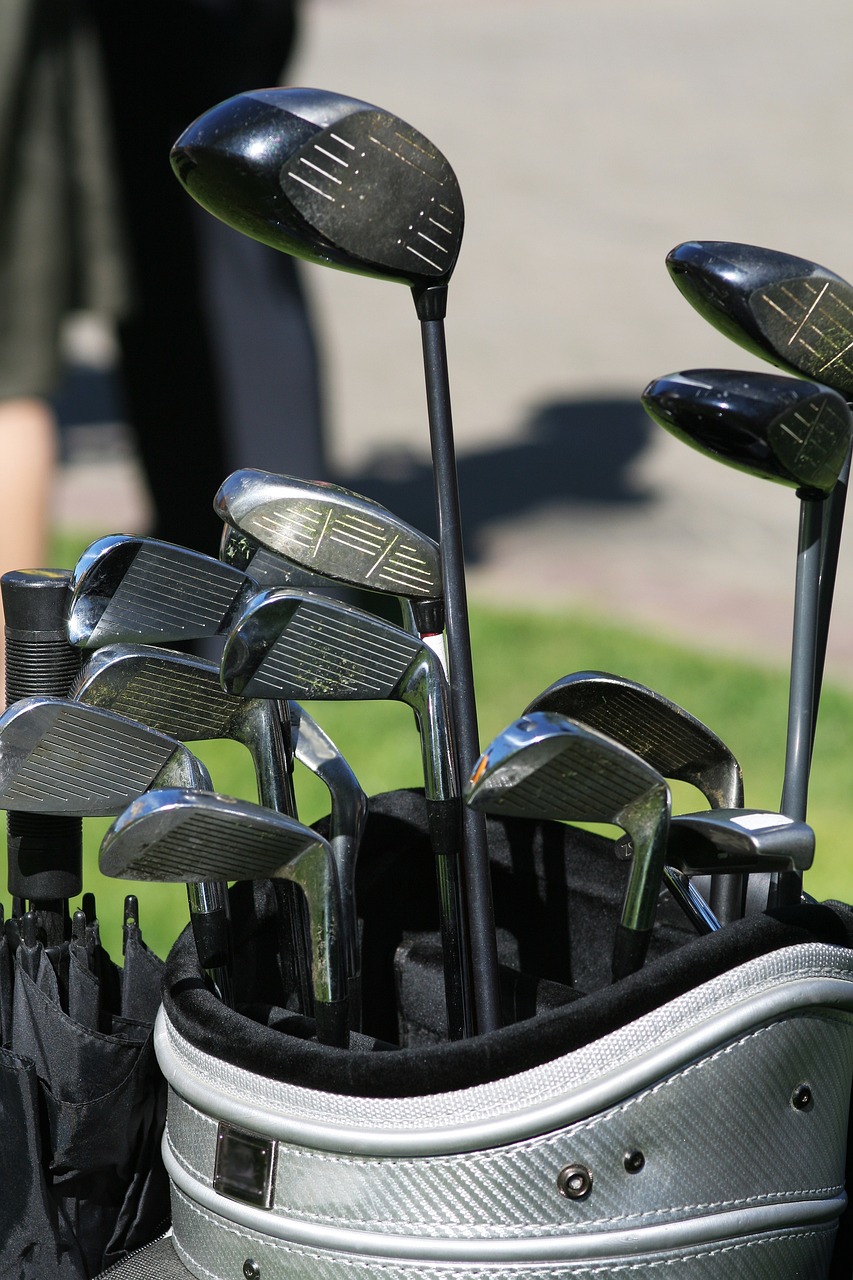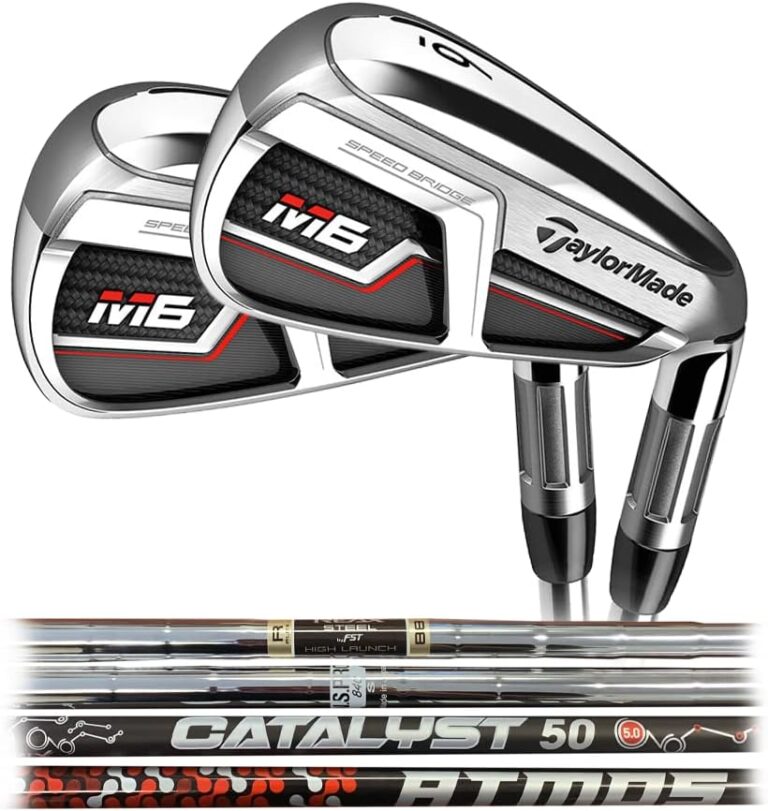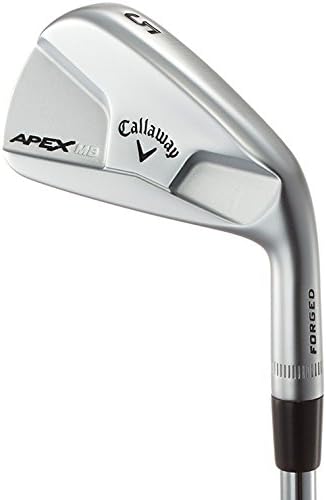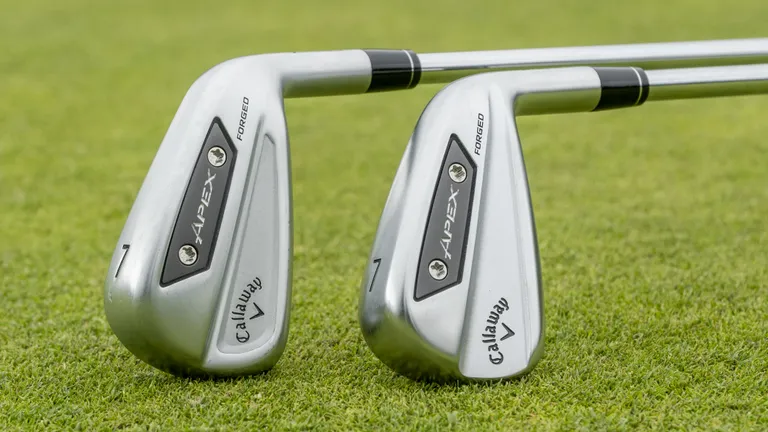What are the 14 clubs in a golf bag?
A fine morning, birds are chirping, and there’s the invigorating scent of freshly trimmed grass. There’s a slight hush as you stride towards your golf bag, eyes sparkling with anticipation.
You’ve often wondered, what’s the story behind the 14 clubs in a golf bag? Now, it’s time to unravel the enigma and up your golfing game!
What Are the 14 Clubs in a Golf Bag?
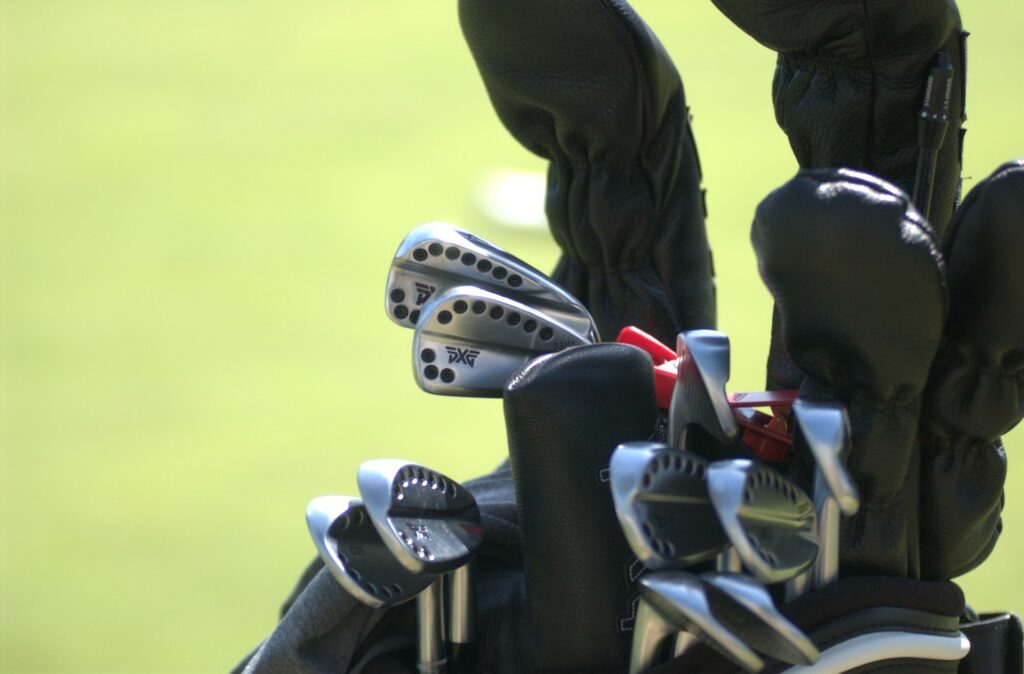
In golf, there’s a club for every situation, each meticulously designed for a specific purpose. Having 14 clubs in your golf bag is no arbitrary number; it’s a rule established by the United States Golf Association (USGA) to promote a fair and challenging game.
Let’s take a journey to discover what these clubs are and what they’re used for.
1. Driver: The Long-Distance Maestro.
First up in our golf bag is the Driver, often termed as Wood 1. This club is your best buddy when you’re starting at the tee. The driver is designed to hit the ball the furthest, getting you off to a flying start. But remember, with great power comes great responsibility. Mastering the driver can be tricky, but once you do, you’ll be off to the races.
2. Fairway Woods: Bridging the Gap
Often overshadowed by their more popular sibling – the driver – Fairway Woods are essential to any golfer’s arsenal. They come in handy when you’re too far for an iron but too close for a driver.
Essentially, they’re the middlemen of the golfing world. Numbered from 3 to 7, they help bridge the gap on long holes
3. Hybrids: The Best of Both Worlds
Like a Swiss Army knife, Hybrids combine the best features of woods and irons. They’re versatile, user-friendly, and perfect for golfers who aren’t comfortable using long irons. Simply put, they’re the jack of all trades in your golf bag.
4. Irons: The Control Freaks
Next up in our bag are the Irons, numbered from 3 to 9. They’re your go-to clubs for shots requiring precision and control. Whether you’re looking to get out of a tricky lie or aiming for the green from a fair distance, the irons have got your back.
5.Wedges: Masters of the Short Game
Meet the specialists of the golfing world: Wedges. These clubs are specifically designed for short shots, providing high trajectory and spin.
They come in different types: Pitching Wedges, Gap Wedges, Sand Wedges, and Lob Wedges. Each with a distinct loft and purpose, they can get you out of a sticky situation on the course.
6. Putter: The Game Changer
Last but not least, we have the Putter. This club might not cover long distances, but it’s a game-changer in its own right. Often, games are won and lost on the putting green. Therefore, mastering your putter is crucial to your overall success.
A closer look at the 14 clubs in a golf bag.
Alright, folks! We’ve introduced the various types of clubs that a golfer might carry. Now, let’s break down the traditional composition of these 14 clubs and explore what each brings to the table.
- Driver
- Fairway Woods (3-wood and 5-wood)
- Hybrids (3 and 4)
- 5 Irons (5, 6, 7, 8, and 9)
- Pitching Wedge
- Gap Wedge
- Sand Wedge
- Lob Wedge
- Putter
1. The Powerhouse: The Driver
Typically, you’ll find one driver in a golfer’s bag. It’s the longest club with the biggest head, and it’s designed for distance. It’s usually used for your first shot off the tee on par 4 and par 5 holes.
2. The Long Game: Fairway Woods
You’re likely to find two fairway woods in a standard golf bag. Commonly, these will be a 3-wood and a 5-wood. They’re your best friends when you need to cover a lot of ground, but you’re too far from the green to use an iron.
3. The Versatile: Hybrids
Hybrids are a relatively new addition to the golf bag and are a blend of the woods and iron.
Hybrids combine the long-distance capabilities of woods with the easier swing style of irons. They’re like the Swiss Army Knife in your golf bag — versatile and always ready to help out in tricky situations. Many golfers carry two hybrids, often replacing their 3- and 4-irons.
4. The Precision Instruments: Irons
Irons make up the bulk of the clubs in a bag. Most golfers will carry at least five irons, typically from a 5-iron through to a 9-iron. These clubs are used for a variety of shots where precision is more important than distance.
5. The Specialists: Wedges
When it comes to short-game shots, wedges are the weapons of choice. A standard set often includes a pitching wedge (PW), a gap wedge (GW), a sand wedge (SW), and a lob wedge (LW). Each has a different loft and purpose, making them the go-to clubs for those tricky shots near the green.
6. The Game Changer: The Putter
Last, but certainly not least, is the putter. This club is used more than any other in a round of golf. It’s the club you use on the green to roll the ball into the hole.
Remember, this is a standard composition, and golfers often customize their set to match their game. In essence, understanding what each club can do for you, and when to use it, can significantly improve your performance on the course. This is what the game of golf is all about!
Choosing the Right Club: A Matter of Judgment
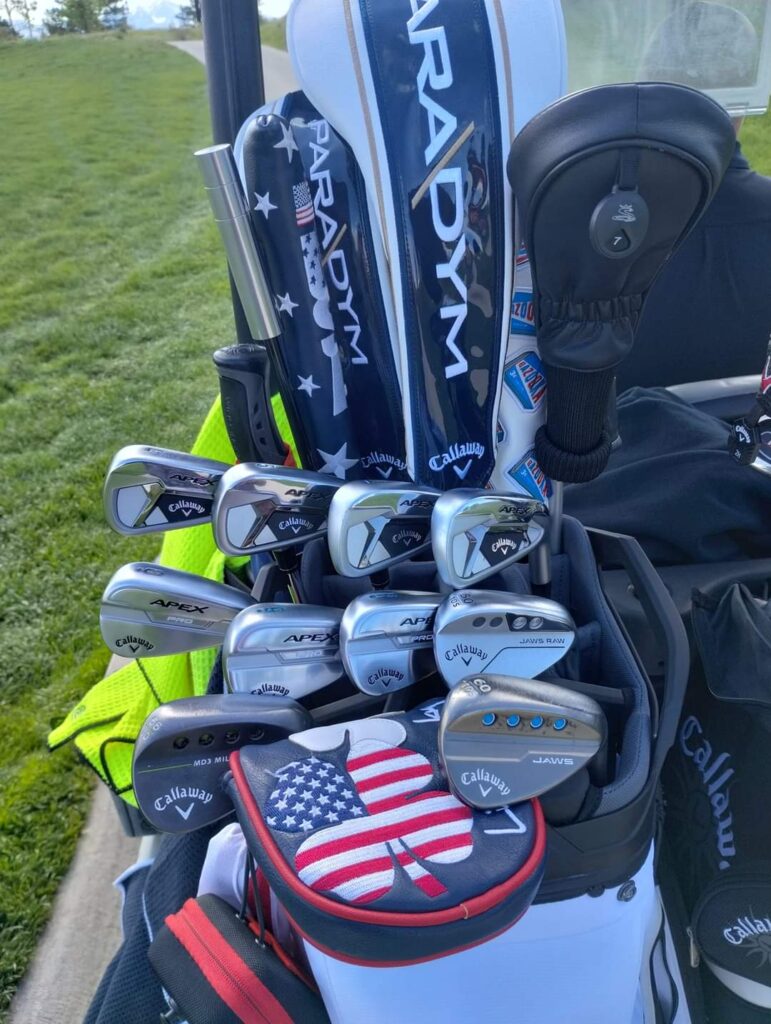
So you’ve got your 14 clubs, each one designed for a specific purpose. However, the real magic lies in knowing which club to pull out of your bag at the right moment. That’s a matter of judgment, and it’s what sets the game of golf apart from many others. Here, we’ll delve into what you should consider when deciding which club to use.
1. Distance to the Hole.
The first thing you need to consider is the distance to your target. Each club is designed to propel the ball a certain distance. The driver will hit it the farthest, while the wedges are for short, precise shots. Practice and experience will help you know which club to use for each range.
2. Wind and Weather.
Mother Nature can be a sneaky adversary or a strong ally on the golf course. Strong winds or wet conditions can drastically alter how far the ball travels. Therefore, you need to adjust your club selection accordingly.
3. Terrain and Lie.
The terrain can significantly influence your choice of club. Uphill shots will require more club (i.e., a longer club or one with less loft), while downhill shots will require less. Similarly, if your ball is in the rough or in a sand trap, you might need a club that can get under the ball, like a wedge.
4. The Shot You’re Facing.
Not every shot in golf is about hitting the ball as far as possible. Sometimes, you’ll need to curve the ball around a tree, get it over a water hazard, or place it accurately on the green. Understanding which club is best suited for the type of shot you’re facing is vital.
5. Personal Comfort and Confidence.
Finally, personal comfort and confidence play a significant role. If you’re more comfortable hitting a 7-iron than a 6-iron, even if the distance suggests you should use a 6, go with the 7. Confidence in your shot can often lead to better results.
Choosing the right club is a skill that develops with time, patience, and plenty of practice. Don’t be disheartened if you make the wrong choice now and then – even the pros do. Remember, every round is a learning experience, so enjoy the process.
Customizing Your Golf Bag.
While the traditional composition of the 14 clubs in a golf bag serves as a comprehensive starting point, every golfer is unique, with a distinct playing style and different strengths and weaknesses.
It’s in this spirit of individuality that we explore the art of customizing your bag to better suit your personal needs.
1. Assess Your Game
The first step in customizing your golf bag is to take a critical look at your game. Where do you excel? Where do you struggle? If you’re consistently overshooting greens, for example, you might consider adding another wedge for improved control on approach shots.
2. The Course Factor.
Different courses present different challenges. A course with large greens and deep bunkers may call for a different mix of clubs than one characterized by tight fairways and thick rough. If you regularly play the same course, you might tailor your club selection to its specific features.
3. Swap Out for Hybrids.
If you consistently struggle with long irons, consider swapping them out for hybrid clubs. Hybrids combine the best features of woods and irons, providing the distance of a wood with the control of an iron. They’re also easier to hit from a variety of lies, making them a versatile addition to any bag.
4. Don’t Neglect the Short Game.
It’s easy to become fixated on hitting long drives, but golf matches are often won or lost on the putting green. If you struggle with short-range shots, consider adding more variety to your wedges or even investing in a specialist putter.
5. Get Professional Advice.
If you’re unsure about how to customize your bag, don’t hesitate to seek professional advice. A golf coach or club professional can help you analyze your game and suggest suitable club combinations.
Remember, the goal of customizing your bag isn’t just to follow the crowd or the latest trends. Instead, it’s about tailoring your equipment to your game, allowing you to play with greater confidence, enjoy the game more, and ultimately lower your scores.
Maintaining Your Clubs: They Take Care of You, You Take Care of Them

One often overlooked aspect of golf is the importance of maintaining your clubs. After all, these are the tools of your trade, and they’ll take care of you on the course if you take care of them. Here’s a guide on how you can keep your 14 clubs in tip-top shape.
Regular Cleaning.
Like anything else, your golf clubs can collect dirt and grime during a round. Regular cleaning not only keeps them looking shiny but also helps maintain their performance. Use warm soapy water and a brush to clean the clubheads, making sure to dry them thoroughly afterward.
Checking for Damage.
Over time, your clubs may suffer from wear and tear. Regularly check your clubs for any signs of damage. Look for any dents or cracks in the clubheads and any fraying or splitting in the grips. If you notice any issues, it’s best to get them repaired promptly.
Re-Gripping.
The grip is the only point of contact you have with your club, so it’s crucial it’s in good condition. A worn grip can lead to poor shots and unnecessary strain on your hands. If your grips are worn, slick, or if they’re leaving residue on your hands, it might be time to re-grip.
Here is a post I wrote earlier showing how to properly regrip a golf club.
Proper Storage.
When not in use, store your clubs in a cool, dry place. Avoid leaving them in the trunk of your car, where they can be exposed to extreme temperatures and humidity, which can damage the clubs over time.
Professional Inspection.
Just as you would take your car for regular servicing, consider getting your clubs inspected by a professional once a year. They can spot any issues you might have missed and make any necessary repairs or adjustments.
Keeping your golf clubs well-maintained not only extends their lifespan but also ensures they perform at their best when you’re out on the course. After all, the state of your clubs can influence your game more than you might think.
Frequently Asked Questions.
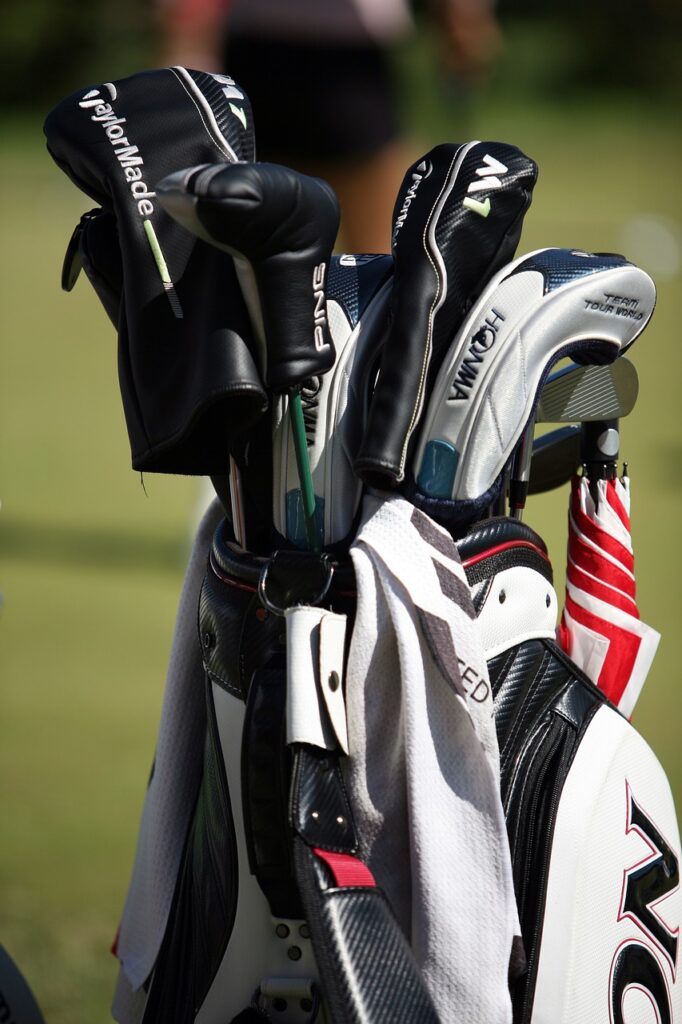
Why is the number of clubs limited to 14 in a golf bag?
This rule was established by the USGA to ensure a fair and challenging game. It prevents players from carrying a club for every possible shot and encourages skill and judgment.
Do I need to fill my bag with all 14 clubs?
No, it’s not necessary to carry all 14 clubs. Depending on your skill level and the course, you may find that you don’t need them all. It’s all about what suits your game the best.
Can I switch clubs during a round?
As per USGA rules, you’re not allowed to switch clubs during a round. The 14 clubs you start with are the ones you have to stick with throughout the game.
What’s the best club for beginners to start with?
A great club for beginners to start with is a 7-iron. It has a good balance of distance and loft, making it easier to get the ball in the air and still cover a reasonable distance.
How often should I replace my golf clubs?
It depends on how often you play, but as a general rule, clubs can last 7-10 years for casual golfers. Regular maintenance can extend their lifespan.
Can I use my woods on the fairway?
Absolutely, that’s why they’re called Fairway Woods. They are designed to be used both off the tee and on the fairway.
Conclusion.
So there you have it! The answer to “what are the 14 clubs in a golf bag” is a deep dive into the world of golf. Each club is a unique player in the symphony that makes up the game, bringing its own character and functionality to the table.
Understanding these clubs, their uses, and the art of selecting the right one at the right time is a game changer. It’s a dance between power, precision, and strategy that could turn any golfing enthusiast into a maestro of the sport.
Embrace your inner golfer, and remember, it’s not about having a bag full of clubs. It’s about knowing which one to pull out and when. From the towering drives to the subtle putts, each shot is a story in itself, a story told by you and your chosen club.
As they say, play the course, not your opponent. With the mystery of the 14 clubs unveiled, it’s time for you to write your own golfing story.
In the words of Arnold Palmer, “Success in golf depends less on strength of body but more on strength of mind and character.” So, understand your clubs, embrace the game, and let your character shine through on the golf course.

